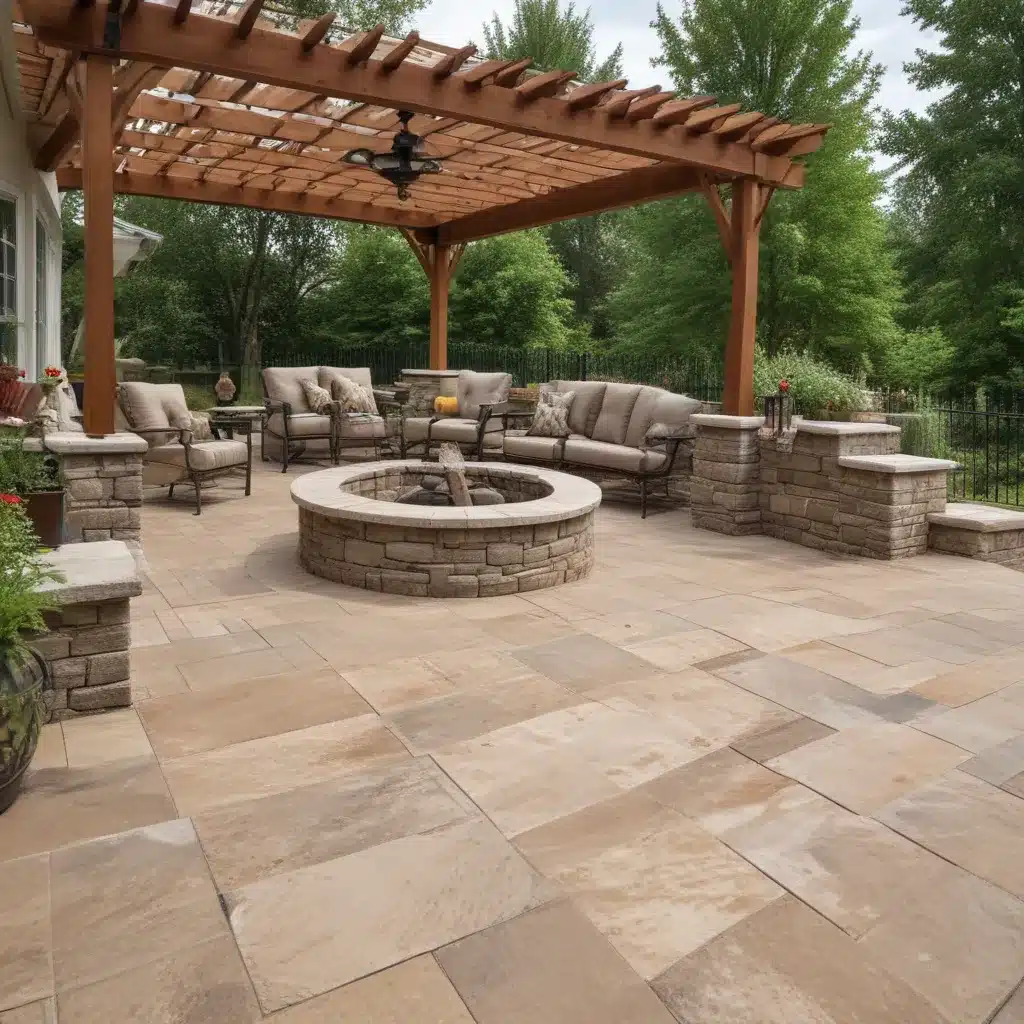
Patio Perfection: Mastering Maintenance Tips for Seamless Outdoor Events
Creating an outdoor living space that is both beautiful and functional requires careful consideration of patio paving, landscape design, and installation techniques. Whether you’re planning a cozy backyard retreat or an elegant entertaining area, the key to patio perfection lies in understanding the latest trends, design principles, and maintenance best practices.
Let’s explore the essential elements that will transform your patio into an oasis of seamless outdoor enjoyment.
Patio Paving Trends
The foundation of any stunning outdoor living space is the paving material. Contemporary patio paving has evolved well beyond the traditional concrete slab, offering a diverse array of options to suit various styles and budgets.
Contemporary Paving Materials: Homeowners are gravitating toward natural stone pavers, such as travertine, bluestone, and limestone, for their timeless aesthetic and durable properties. Porcelain tiles have also gained popularity for their slip-resistant surface, easy maintenance, and wide range of color and texture options. For a more rustic vibe, tumbled or antique-finished pavers can create an appealing aged look.
Sustainable Paving Solutions: Eco-conscious homeowners are increasingly seeking out permeable paving materials that allow water to permeate through the surface, reducing runoff and mitigating the urban heat island effect. Interlocking concrete pavers, porous concrete, and permeable pavers are all excellent choices for the environmentally-minded.
Textural Paving Designs: Beyond just color, texture has become a key consideration in patio paving. Herringbone, basketweave, and circular patterns can add visual interest and a sense of movement to the space. Complementing these design elements with contrasting border materials, such as stone or brick, can further enhance the aesthetic.
Outdoor Design Ideas
The patio paving serves as the foundation, but the overall layout and integration with the surrounding landscape are equally crucial for creating a cohesive and functional outdoor living area.
Seamless Patio-to-Landscape Transitions: Blending the patio with the adjoining landscape through thoughtful plant selection and hardscape elements can result in a seamless, harmonious design. Incorporating raised garden beds, water features, or decorative walls can help define the patio’s boundaries while maintaining a natural flow.
Functional and Aesthetic Patio Layouts: Carefully planning the patio’s layout can maximize usable space and accommodate various activities, from dining and entertaining to lounging and relaxation. Strategically positioning seating areas, dining sets, and cooking stations can create distinct “zones” within the larger patio space.
Integrating Lighting and Furniture: Effective outdoor lighting, both functional and decorative, can extend the patio’s usability into the evening hours and highlight key design elements. Carefully selected patio furniture, such as weather-resistant sofas, chairs, and tables, can further enhance the space’s aesthetic appeal and comfort.
Installation Techniques
Proper installation is crucial for ensuring the longevity and performance of your patio paving. Attention to detail in the subbase preparation and paver placement can make all the difference.
Proper Subbase Preparation: A stable, well-compacted subbase is the foundation for a durable patio. This typically involves excavating the area, installing a gravel or crushed stone base, and thoroughly tamping the surface to create a level, load-bearing foundation.
Precision Paver Placement: Laying the patio pavers with care and precision is essential for achieving a smooth, even surface. This includes ensuring proper spacing, aligning edges, and maintaining consistent joint widths. Using a rubber mallet or vibrating plate compactor can help set the pavers firmly in place.
Ensuring Proper Drainage: Incorporating an effective drainage system, such as sloping the patio surface or installing catch basins, is crucial for preventing water accumulation and potential damage to the paving materials.
Maintenance Guidelines
Regular maintenance is the key to preserving the beauty and functionality of your patio over time. Addressing issues promptly and following best practices can extend the life of your outdoor investment.
Routine Cleaning and Sealing: Regularly sweeping and cleaning the patio surface, as well as applying a protective sealant every few years, can help prevent the buildup of dirt, debris, and stains, while also shielding the pavers from weathering and wear.
Addressing Cracks and Uneven Surfaces: Monitoring the patio for any cracks, settling, or uneven surfaces and addressing them promptly can help maintain a safe and visually appealing outdoor living space. Depending on the severity, this may involve repairing or replacing individual pavers or addressing underlying issues with the subbase.
Winterizing and Protecting the Patio: In colder climates, properly winterizing the patio, such as clearing snow and ice and applying de-icing agents, can help prevent damage from freeze-thaw cycles. Covering or storing patio furniture during the off-season can also extend its lifespan.
Cost Comparisons
When planning a patio paving project, it’s essential to consider the overall budget and long-term maintenance costs to ensure you make the best investment for your outdoor living needs.
Budgeting for Patio Paving Projects: The cost of patio paving can vary widely depending on the materials, size of the project, and local labor rates. Homeowners can expect to pay anywhere from $10 to $50 per square foot for a basic concrete patio, while high-end natural stone or porcelain options can range from $20 to $100 per square foot.
Evaluating Long-Term Maintenance Costs: While the initial paving cost is essential, it’s equally important to consider the long-term maintenance requirements and associated expenses. Some materials, such as natural stone or permeable pavers, may have higher upfront costs but can offer lower maintenance needs and longer lifespans, potentially providing a better return on investment.
Maximizing Return on Investment: Carefully selecting paving materials, designing a functional and visually appealing layout, and implementing proper maintenance strategies can all contribute to enhancing the overall value of your outdoor living space. This not only creates a more enjoyable environment but can also increase the resale value of your property.
By understanding the latest patio paving trends, embracing innovative outdoor design ideas, and following best practices for installation and maintenance, you can transform your backyard into a true oasis of seamless outdoor enjoyment. Explore the possibilities with Cincinnati Patiopaving to create your dream patio and host unforgettable events for years to come.

